This is the second part of our 3-parts guide, where we show you how to start and grow an affiliate marketing website that can make you a decent income, and you can sell it for more than $100K.
- In the first part, How to Start an Affiliate Marketing Website and Grow it to $100K, we discussed affiliate marketing, how to make it work for you, how to research a lucrative niche, how to identify the right keywords and content you want to read, and how to create a buyer persona so you will know how to address your content to maximize your earnings.
- In this second part, we will set up the website, add content, design necessary pages, connect social media profiles, etc. This is where all the research we did already will materialize into action.
- The third part, How to Grow Your Affiliate Marketing Website, shows you how to optimize your blog to rank well in search engines and find other ways to bring traffic. I recommend reading this part if you own an affiliate marketing blog and want more visitors.
Table of Contents
- 1 Do I need a website?
- 2 Register a domain name.
- 3 Get a hosting account.
- 4 Install WordPress or other CMS
- 5 The Importance of a Good WordPress Theme
- 6 Design the logo and other graphics.
- 7 Install the Essential Plugins
- 8 Create the essential pages of your website
- 9 Claim your brand on social media.
- 10 Start email marketing
- 11 Write Content That Gets Read, and Sales
- 12 Write product reviews that bring sales
- 13 Conclusions on how to create an affiliate website
Do I need a website?
Even if vlogs and video content have taken the spotlight for a couple of years already, I believe the best way to start with affiliate marketing is to create a blog or a website.
Although you can still do affiliate marketing without them, and many successful affiliates do vlogs or PPC directly to advertisers’ websites, I wouldn’t recommend it, especially if you make your first steps in affiliate marketing.
Check my reasons below:
A website offers you a wide range of benefits, including:
- Unlike vlogs or social media channels, you own the content and the brand without risking getting deplatformed.
- You build a digital asset, bringing together multiple traffic sources and diversifying the monetization methods.
- The ability to create helpful content (which is the fundamental aspect of building any profitable affiliate marketing business)
- You can generate more traffic from search engines.
- You can promote your affiliate products better (through product reviews, discounts, offers, email lists, etc.)
That’s why I suggest starting a website first. Once you establish your brand and authority, you can complement it with a vlog and other channels.
You can get started immediately if you haven’t created a website on WordPress. You can follow the instructions in our step-by-step guide on how to start a blog, and you’ll be able to launch your WordPress website within 2 hours.
Register a domain name.
A domain name is your address on the Internet. A new domain name can be claimed through various online services. Registering a new domain name is not expensive—doing it with GoDaddy or NameCheap can cost you as little as $10 a year, and other services offer domain registration in the $20 to $40 range. Some domain names are more expensive than others.
If possible, your domain name should match the name of your blog. It doesn’t have to; once you own your domain name, you can put whatever you want on that site. Matching the web address to the blog name will give you more name and brand recognition and make it easier for readers to find you.
Two- and three-word combinations are less likely to have been used already. With some creativity, you can find a free domain name related to your niche that is more quirky and memorable.
Instead of purchasing a new domain name, you could check domain marketplaces like Godaddy Auctions and buy aged domains with SEO power attached. Make sure you do your due diligence and that the domain you acquired was not involved in shady tactics. Related: How to Make Money With Aged DomainsGet a hosting account.
Once your blog has a domain name, it has an address but doesn’t yet have a home. The files associated with your site must be hosted on a professional storage server so your viewers can access them.
There are many hosting sites out there. Many places that register domains also offer convenient hosting services, though you should ensure the site has the services you need before signing up.
Blue Host is a shared hosting site for WordPress bloggers transitioning to a self-sufficient site.
When you first start, the cheapest option is often a shared hosting account. Prices can start as low as $5-$10 per month. Sites that offer this option include iPage, eHost, and In Motion Hosting. Research the hosting site before you sign up.
Another option is to start with a WordPress-managed hosting service. Here is a guide on how to host your website with WPX.net – our preferred WP hosting provider. For more information, see our article on choosing the best-managed WordPress hosting services.
Install WordPress or other CMS
You’ve got a domain name and a host where the files associated with it can live. All you have to do is make your blog and transfer it to the host—and if you’re not technically minded, this can be not very comforting.
A Content Management System (CMS) is a piece of software you install directly on your web host (not your computer) that streamlines the addition of necessary site features like tags and categories for pages, search and archive functions, forums, and comments sections.
There are several blogger-specific CMS programs, many of which you can use for free. WordPress is the most common.
If you need help setting up WordPress, you should get help from one of our recommended WordPress maintenance services.
The Importance of a Good WordPress Theme
The layout and design of your blog will give your reader their first impression of your business. You want to make sure it’s easy to navigate and read on the practical side. Important posts should have a prominent place on the page, and the color scheme shouldn’t interfere with your writing’s legibility.
Consider premium themes with customization options, support, and updates. Check our list of 25+ recommended affiliate marketing themes for WordPress blogs. Layout and color choices have some role; for example, if you run a photography blog, you should choose a format emphasizing images. A financial blog might find it helpful to install a live tracker of the stock exchange on its front page; a sports blogger might have a ticker of scores and match results.
Design the logo and other graphics.
A great way to clarify your brand is to design a logo that reflects your niche. I recommend taking the financial investment to hire a freelancer to design the logo for you. The logo will represent your brand in most readers’ minds, and your initial investment in hiring a designer will be repaid by boosting your brand recognition.
Check the best ten freelance websites where you can outsource your design project. A well-designed site will be more likely to attract visitors and ultimately be worth the initial financial investment.
Though this is most important with your logo, your blog design aspects can also be actual. Here is a list of graphical elements: logos, Banners, Favicons, social media covers and profile pictures, ebook covers, etc. You can use Canva to design all these elements but hire a designer when money comes in.
Install the Essential Plugins
We’ve written a detailed guide on the best WordPress plugins you should install on your affiliate marketing blog.
Here are the plugins we’re going to be installing on your site and a brief overview of what they do:
- Yoast SEO – Quickly and easily optimize your posts and pages for search engines. Alternatives: SEOPress, RankMath
- OptinMonster – Collect your visitors’ emails, improve conversion rates, and more. [Get OptinMonster deal]
- WP External Links – Makes all external links on your website open in new tabs, keeping more users on your website.
- Google Analytics – The best tool to see how many visitors your website gets, from where, and what they’re doing.
- Akismet stops people from spamming your blog with fake comments, a common problem for every blog owner.
- WP Rocket – Speeds up your website by ridiculous amounts. [Check our WP Rocket review]
- All In One WP Security – Protects you and your website from hackers.
- UpdraftPlus – Automatically creates backups of your website in case something breaks. [Get the Updraft deal]
- Contact Form 7 – The easiest way to create a contact page for your website.
- Thrive Content Builder (TCB) enables you to design content without coding experience.
The only problem with plugins is that there are thousands to choose from, like themes. Adding too many (or poorly built ones) to your blog can weigh your site down and make it run slowly.
These plugins have the features you need for your affiliate marketing blog. But maybe there are some cases when you need custom functionalities (for instance, to create tools in your niche). In this case, you should hire a WordPress development company to code them.
Related articles you should read:
Create the essential pages of your website
If you already have a blog, you must create the essential pages to start affiliate marketing properly.
- Create an affiliate disclosure page—This is ethically crucial because you should tell your website visitors that you’re earning a commission by selling affiliate products. You can use this website to create a disclosure policy for free—for example, Monetize.info’s Affiliate disclosure page.
- Create a privacy policy page—Almost every website collects personal information from visitors (in website browser cookies), so it’s always better to create a dedicated Privacy Policy page. An example is Monetize.info’s Privacy policy page.
- Create a Terms and Conditions page – A Terms and Conditions page where a blog can show all the terms and rules of using the blog. You can use many free websites to create a Terms And Conditions page on your affiliate website. Example: Monetize.info’s Terms and Conditions
- Create an About Us page—If you’re looking to build an authority site in your niche, your audience needs to know who you are, your skills, and what you’ll offer in your blog—for example, Monetize.info’s About page.
- Create a Contact Us page. Your visitors may have questions about your recommended products, so make sure your page is active and working. Here’s an example: Monetize.info’s Contact Us page.
All the above pages must be included in your affiliate marketing blog or website. They save you from legal issues in the future and help you build trust with your website visitors.
It’s celebration time! You have your first affiliate marketing website ready. Congrats on that! However, the problematic parts have started. Don’t worry; we have you covered.
You should use Social Media to your advantage. Claim your brand accounts on Facebook, Twitter, YouTube, Instagram, Linkedin, Reddit, Quora, Medium, and Pinterest. Many social media networks may work for you, depending on your niche.
Use NameChk.com to find available ones. Some significant networks are URL structures: Youtube.com, WordPress.com, tumblr.com, Scribd.com, Academia.edu, Quora.com, SlideShare.net, Medium.com, Etsy.com, About. me, Gravatar.com, Flickr.com.Your social media pages should act as gateways to your affiliate blog. Drive users to these pages and convert them to sign up for your newsletter by offering them reasons to do so.
Start email marketing
Email marketing has been around for decades and continues to be one of the most preferred channels for marketers. According to Acesira, almost 68% of teenagers and 73% of millennials prefer emails for receiving communication from brands or businesses. This is likely because email is also the preferred communication channel for consumers.
By collecting the email addresses of prospects or customers and engaging them with exciting content or great offers, you can stay top of mind and generate revenue.
Don’t lose precious time; install a newsletter box for users to sign up for updates and offers.
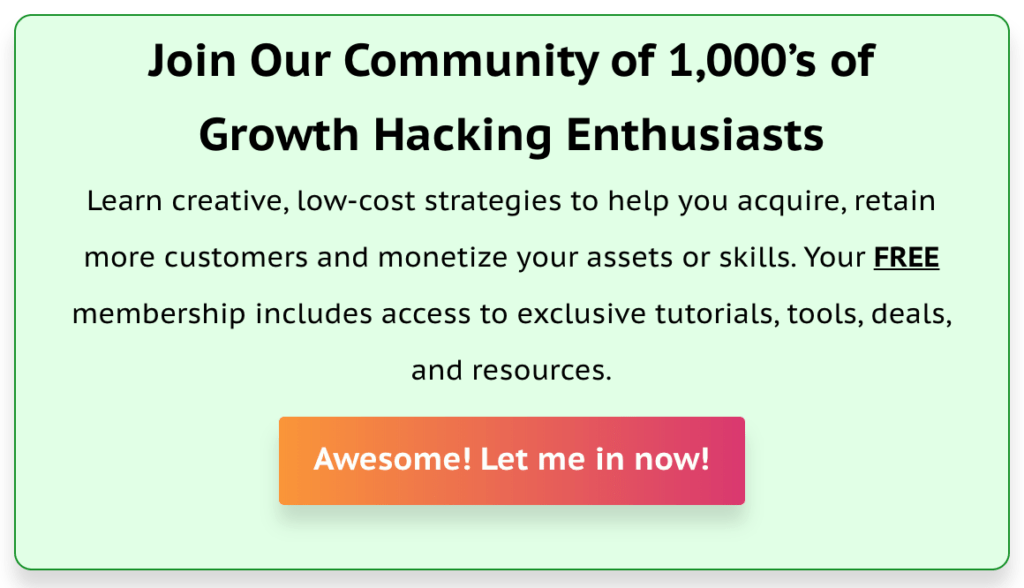
Later on, when your cornerstone content (more on this later) gets traffic, add content upgrades to grab email addresses and grow your list. This way, you grow an incredible asset that will make you money for years.
I recommend using OptinMonster [OptinMonster discount] for newsletter boxes and popups and ActiveCampaign for sending emails and marketing automation.
Write Content That Gets Read, and Sales
After choosing a niche, setting up the site, and selecting an affiliate network or more to work with, you are now ready for the hardest yet potentially rewarding part of this business.Your goal must be to become a reliable and authoritative site for your niche, so you must provide premium and high-quality content.
Many websites are trying to pass anything for good content, but these websites only aren’t making any money, in all honesty. Those who make money are those whose owners either spend a lot of time and money finding amazing content creators or becoming ones themselves and optimizing their content in every sense possible.
1. Find Best Performing Content In Your Niche
Every blog post on page one of Google has the best-performing content, so this step should be easy to complete. You must type your keyword in a Google search box and get the best-performing content you seek.
Check the results for a few keywords and pick three or more articles to use as a template for your blog post.
I do it like this:
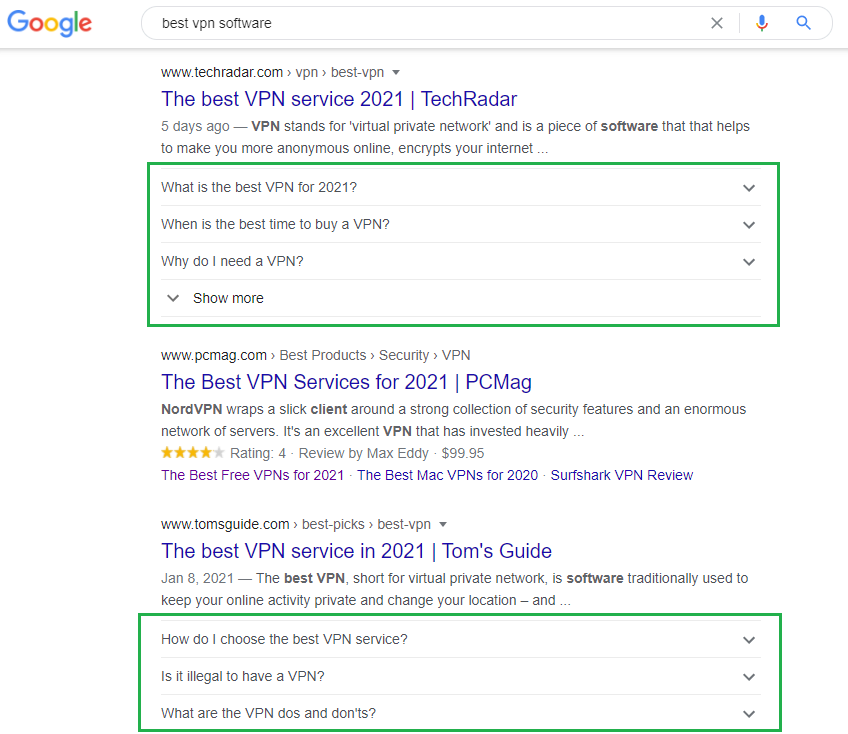
I go to Google search and type keywords relevant to my content topic. After I’ve scanned content on the first three spots on the first page, I write down on the paper a list of short subheading ideas that I’ll use for my blog post. I believe this is called outlining.
Then, I go to Ubersuggest and type those exact keywords one by one in a search box. I check the results and scan my top competitors for that particular keyword. You can find competitors if you click on Content Ideas from the Menu.
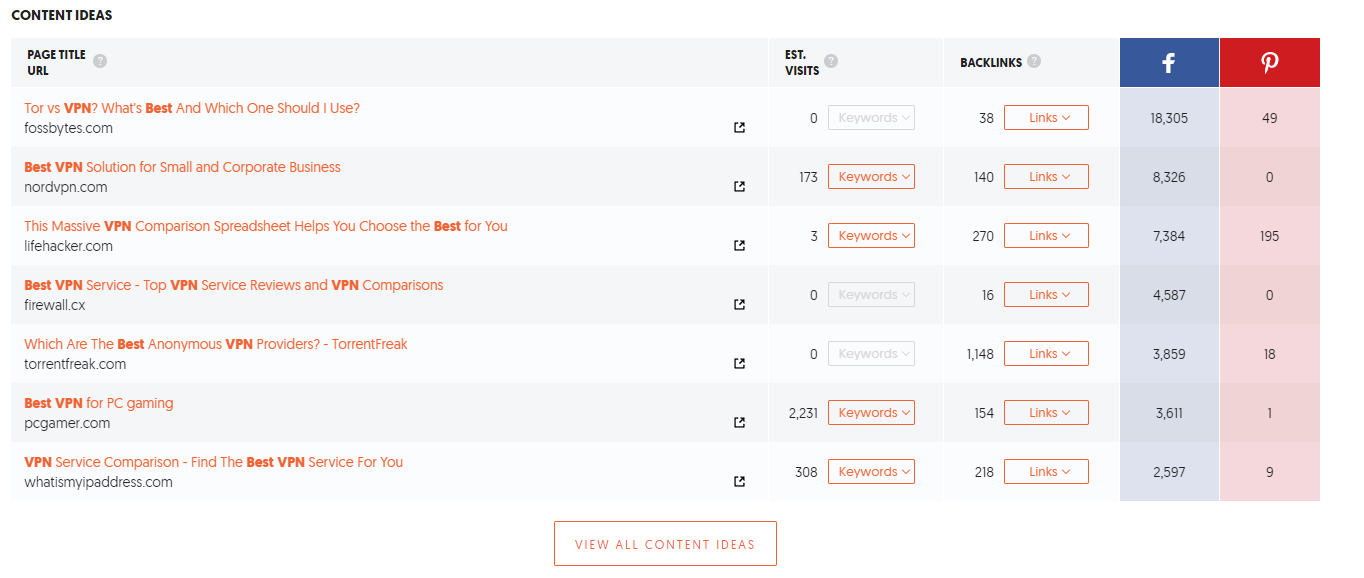
I check what types of content they publish (articles, blog posts, videos, infographics, or something else) to determine how to outperform them. Reading all those blog posts is better, especially if I know little about that subject.
I also check if there are more subheadings I can use before moving on to the next step.
If you aren’t satisfied with your list of subheading ideas, check posts from pages 2 or 3 of Google for more ideas.
2. What kind of content should you write?
Here we are at the hard part of this guide: content creation. Creating content is easy, but it’s tough to create great content… Great content is a must-have. It is what you need to be a successful affiliate marketer, web store owner, blogger, or freelance writer.
Blogging expert Yaro Starak talks about something called a “pillar article” in his advice columns. Chris Garret calls it “flagship content,” while Brian Clark calls it “cornerstone content.” These experts describe the same essential thing: the articles that give your reader a clear conception of your niche and your opinions.
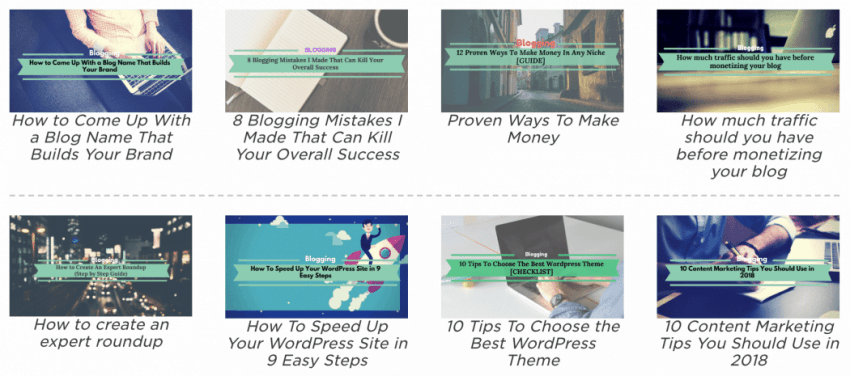
Core content articles should be extended—around 1500-5,000 words, depending on the format. These posts should not be time-dependent; a reader who sees the post a year from now should still find it relevant. These posts are the most likely to receive backlinks from other websites and, ideally, will continue to bring in new readers long after you initially post them.
So they don’t get buried in your archives, it’s a good idea to list these posts in a separate area, whether a drop-down menu or links in a sidebar—this lets new readers quickly access the most helpful content. You can also reference these articles in future posts to help new readers find and read them.
The more of these core content posts you include on your blog, the better. Ten is a good minimum, and you should consist of at least three in your first 15 posts.
3. How to create cornerstone content?
The ultimate goal of any good core content post is to teach your readers something, whether it’s a skill related to your niche, an explanation of a concept, or an opinion piece that will help them see your niche in a new way.
If you’re unsure what kind of article to write, some core content options are listed below and might help give you an idea of where to start.
Cornerstone Content Ideas
- Glossary pages are lists of terms related to your niche that you define for the reader in your own words. Glossary pages are often helpful if your niche is related to technology, finance, law, or any other field with specific or esoteric terminology.
- Step-by-step how-to articles teach your reader how to do a task or make a product, often with pictures at critical steps. Recipe posts on cooking blogs fit into this category and are probably the most familiar example, but this article style applies to almost any niche.
- List articles are excellent core content because people love to read and share them, which can be good for stirring up a conversation. They can take a few forms. Advice lists give readers tips on how to accomplish tasks (“4 ways to get better sleep” or “5 things to do before you get a mortgage”). Ranked lists are ideal for product-based blogs. Informative lists share knowledge with the reader (“most underrated horror movies” or “surprise benefits of green tea”) and can be helpful in any niche.
You can think that your writing sucks, but you have to try. Maybe you don’t know how to write. In the end, you can always outsource.
The Anatomy of Great Content
- 2000 words at least… Many studies, including one from CoShedule, have shown that every blog post ranking on the 1st page of Google is over 2000 words.
- With magnetic headline… Copyblogger claims that 8 out of 10 people will read your headline, but only 2 of those eight people will read the rest of your content. Even if your content is outstanding and creative, a weak headline will harm its chances of success.
- Solves a problem for your audience… People use a search engine because they want an answer, and the search engine has to deliver that answer. Answering your audience’s questions will improve your chances of high ranking. You can use Quora to find problems that people ask and create content around answers to those questions.
- Actionable content targets your specific audience and addresses their needs. It provides value and establishes trust while communicating clearly and effectively. And the essential thing is that it gets your audience involved.
- Easy to read… Subheadings, bullet points, and lists separate big blocks of text. They deliver lots of information in a concise form. People like lists. The white space around them separates them from the rest of the text and draws in the eye. Keep sentences and paragraphs short.
- Written how you speak… Throw in some of your personality. Talk with passion about your topic and show your sense of humor. Try to get personal because that is the best way to create a connection with your audience.
- Use visuals, such as images or screenshots, infographics, and video or audio recordings, to help you catch your audience’s attention. By including quality multimedia, you will satisfy many people visiting your site. But add them only when they add value to your content, and avoid insignificant stock images.
- Have a clear call to action at the end… Ask your readers to leave a comment, share your blog post, follow you on social media, or buy your product. Just make sure you explain what you’d like them to do. A good call to action is something different and stands out.
Write product reviews that bring sales
Defining yourself as an authority in your niche is a great way to increase conversions and build a loyal audience. You should always create informative blog posts rather than sales pitches. Your visitors will appreciate researched and well-written blog posts that answer their questions.
When you write affiliate reviews, always be honest. Don’t try to sell anything you wouldn’t recommend to your family and friends. Most people will read many articles online, and if you are the only one positively presenting a lousy product, you will lose visitors’ trust.
The most important thing about the content you post on your website is that it needs to be informative. The Internet is overflowing with websites whose only purpose is to sell stuff. Visitors, especially those willing to spend money, have learned to see the difference.
Most people fail to make even one sale based on their product reviews. Do you know why? They usually brag about the product to increase sales, but they don’t have its limitations.
What happens when you talk only about good things about a product? You’ll not only mislead your target audience, but they can easily smell that you’re hard-selling to generate a commission. So they don’t buy it.
We’ve explained in a detailed guide how to write compelling affiliate marketing product reviews that generate revenueHere are several affiliate marketing review examples that we wrote and followed this proven framework:
Learning to balance the sales pitches with actual stone-cold helpful information is the trick of the affiliate marketing trade, which the business has mastered.
Conclusions on how to create an affiliate website
Congrats on reaching the end of the second part of our guide. Now, you know how to set up an affiliate marketing website, add content, design necessary pages, connect social media profiles, and more.
- If you already have a website, go to the final part, How to Grow Your Affiliate Marketing Website & Make More Money, where I show you how to optimize your blog to rank well in search engines and find other ways to bring traffic.
- Do you look for multiple methods besides affiliate marketing to monetize your blog? Check out the sequence of this article to learn how to monetize your blog.
- Don’t know what affiliate marketing is, how to make it work for you, how to research a lucrative niche, or how to identify the keywords and content you want to read? Or how to create a buyer persona so you will know how to address your content? Check the first part of this guide: How to Start an Affiliate Marketing Website and Grow it to $100K.
 Monetize.info We Help You Monetize Better Your Digital Assets! 💰👍
Monetize.info We Help You Monetize Better Your Digital Assets! 💰👍


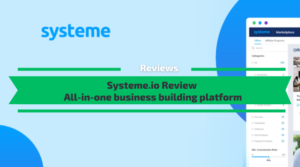
![LinkWhisper Review [Internal links on AutoPilot]](http://monetize.info/wp-content/uploads/2020/05/LinkWhisper-Review-300x167.png)
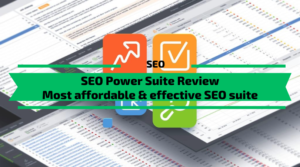



![Best Ad Networks For Publishers [Top 21]](http://monetize.info/wp-content/uploads/2020/10/Best-Ad-Networks-For-Publishers-Top-21-310x165.webp)

![Is an Affiliate Program Right for Your Online Business? [PROs & CONs, Examples]](http://monetize.info/wp-content/uploads/2024/07/Is-an-Affiliate-Program-Right-for-Your-Online-Business-310x165.webp)
Hey you give every single detail. Thank you soo much.